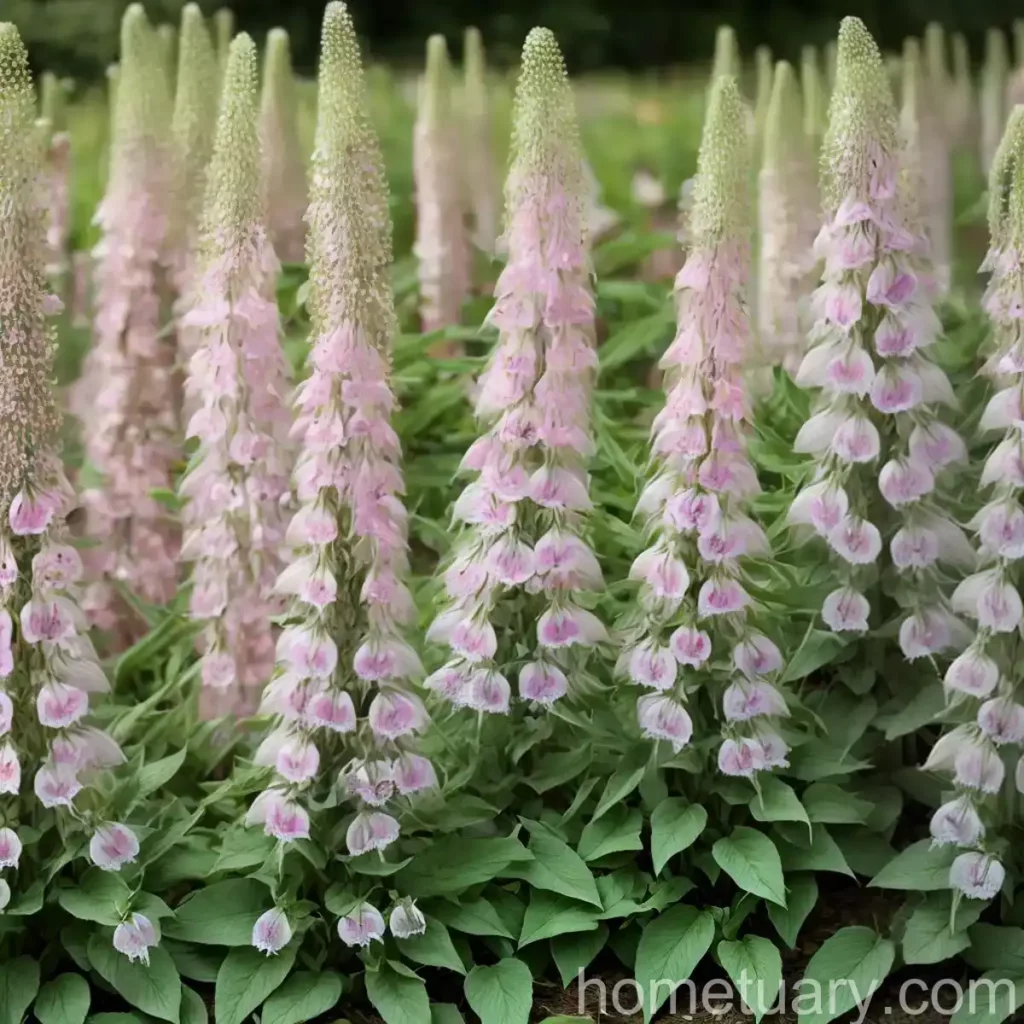Common Foxglove (Digitalis purpurea ‘Sutton’s Apricot’): A Comprehensive Guide
Common foxglove, scientifically known as Digitalis purpurea ‘Sutton’s Apricot’, is a stunning flowering plant that belongs to the Plantaginaceae family. With its impressive spires of tubular, apricot-colored flowers, this perennial plant adds a touch of elegance to any garden or landscape. In this comprehensive guide, we will delve into the culture, uses, care tips, and fascinating characteristics of the common foxglove.
What is a Plant: Common Foxglove (Digitalis purpurea ‘Sutton’s Apricot’)?
The common foxglove, Digitalis purpurea ‘Sutton’s Apricot’, is a herbaceous perennial that is native to western and southwestern Europe. It is known for its tall, striking spikes of tubular flowers that bloom in early to mid-summer. The ‘Sutton’s Apricot’ variety specifically showcases a mesmerizing apricot hue, adding a unique color variation to the typical purple shades of the digitalis purpurea species.
Botanical Description
- Species: Digitalis purpurea
- Variety: ‘Sutton’s Apricot’
- Common Name: Common foxglove, Sutton’s Apricot foxglove
- Family: Plantaginaceae
- Type: Herbaceous perennial
- Flower Color: Apricot
- Flowering Season: Early to mid-summer
- Height: Up to 4-5 feet
- Toxicity: Poisonous if ingested
Now, let’s explore the key takeaways and in-depth insights into the culture, uses, and care requirements of the common foxglove.
Key Takeaways – Common Foxglove (Digitalis purpurea ‘Sutton’s Apricot’)
Culture
- Hardiness Zones: Common foxglove is well-suited to USDA Hardiness Zones 4 to 8.
- Growing Habit: It exhibits an upright and clump-forming growth habit.
- Landscape Use: Ideal for borders, woodland gardens, and naturalized areas.
- Wildlife Attraction: Known to attract pollinators such as bees and butterflies.
Uses
- Garden Design: Adds vertical interest and a pop of apricot color to garden landscapes.
- Medicinal Properties: Contains digitalis glycosides with medicinal uses in heart medications.
Let’s now explore the specific care requirements for cultivating and maintaining common foxglove in home gardens and landscapes.
Plant Care Tips
Caring for common foxglove involves attention to water, sunlight, fertilizer, soil, pruning, propagation, and container considerations. Let’s delve into each of these aspects in detail.
Water
- Watering Schedule: Provide regular, consistent moisture, especially during dry periods.
- Soil Moisture: Well-draining soil is essential to prevent waterlogging and root rot.
- Mulching: Apply a layer of mulch to retain soil moisture and regulate temperature.
Sunlight
- Sun Exposure: Prefers partial shade to full sun, especially in warmer climates.
- Dappled Shade: Ideal for protecting the plant from intense midday sun.
Fertilizer
- Fertilizing Frequency: Apply a balanced, slow-release fertilizer in early spring.
- Avoid Overfertilization: Excessive nutrients can lead to leggy growth with fewer flowers.
Soil
- pH Level: Thrives in slightly acidic to neutral soil (pH 6.0-7.0).
- Soil Type: Well-drained, fertile loam with good organic content.
Pruning
- Deadheading: Remove spent flowers to encourage prolonged blooming.
- Trimming: Cut back the flower spikes after blooming to promote new growth.
Propagation
- Seed Propagation: Collect and sow seeds in late summer for new plant growth.
- Division: Divide overcrowded clumps in early spring for propagation.
Container
- Container Size: Select a deep container to accommodate the long taproots.
- Drainage Holes: Ensure adequate drainage to prevent waterlogged soil.
We’ve covered essential plant care tips for common foxglove, but it’s crucial to be aware of potential diseases and pests that can affect this beautiful plant.
Common Diseases
Common foxglove may be susceptible to certain diseases that can impact its growth and overall health. Understanding these diseases and their diagnosis is vital for effective management and prevention.
Disease Diagnosis
- Powdery Mildew: White powdery spots on leaves, often caused by humid conditions.
- Leaf Spot: Circular brown spots on leaves, potentially due to fungal pathogens.
- Crown Rot: Rotting at the base of the plant, usually caused by waterlogged soil.
Now, let’s shift our focus to the common pests that may pose a threat to the well-being of common foxglove.
Common Pests
Pests can also pose a challenge to maintaining the vitality of common foxglove. Identifying and addressing these pests is crucial in ensuring the plant’s health and longevity.
Botanist’s Tips
To ensure the success of common foxglove in your garden, here are some expert tips:
- Habitat Mimicking: Replicate the plant’s native woodland habitat for optimal growth.
- Companion Planting: Pair with other deer-resistant and pollinator-friendly plants.
- Regular Monitoring: Keep a close watch for signs of pests and diseases to take early action.
Now that we’ve covered essential care tips and potential challenges, it’s time for some fun facts about common foxglove!
Fun Facts
- The genus name “Digitalis” is derived from the Latin term for “finger” due to the flower’s shape, which is ideal for fitting over a finger.
- Common foxglove has a rich folklore, often associated with fairy lore and magical beliefs.
- Though prized for its beauty, all parts of the plant are toxic if ingested, making it essential to handle with care.
To further expand your knowledge and exploration of common foxglove, here are some external resources to deepen your understanding and appreciation of this captivating plant.
Links to External Resources
- The Royal Horticultural Society – Digitalis purpurea ‘Sutton’s Apricot’
- University of Vermont Extension Department of Plant and Soil Science – Common Foxglove
- North Carolina State University Extension Gardening – Growing Foxgloves
- American Society for the Prevention of Cruelty to Animals (ASPCA) – Toxic and Non-Toxic Plants: Foxglove
With its enchanting blooms and rich history, the common foxglove holds a special place in the world of ornamental and medicinal plants. By understanding its culture, care needs, and potential challenges, you can cultivate and appreciate this stunning plant in your own garden with confidence and expertise.















